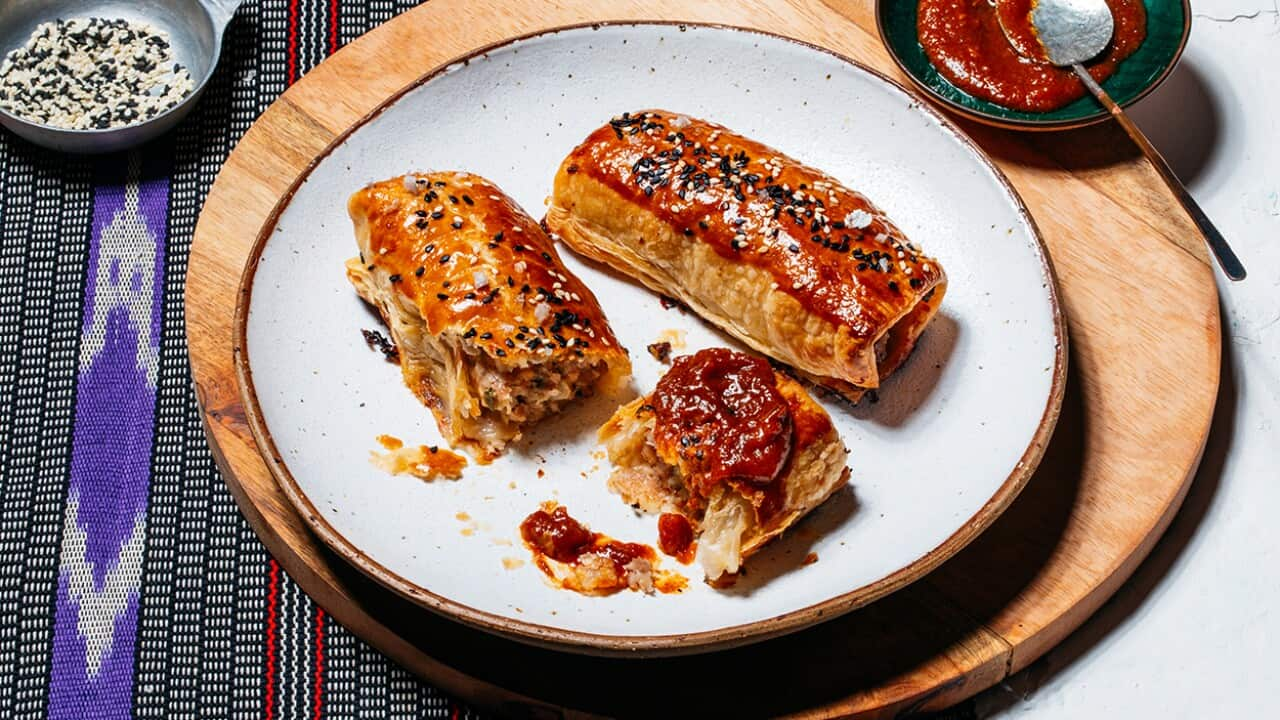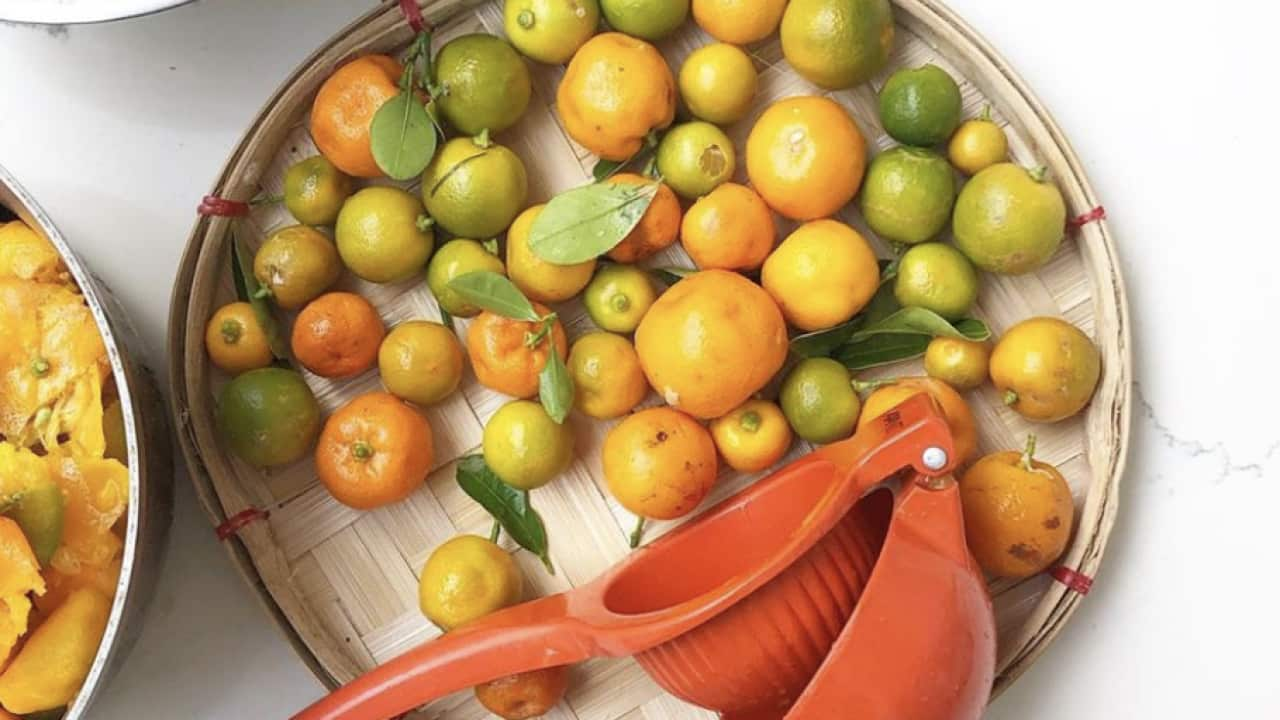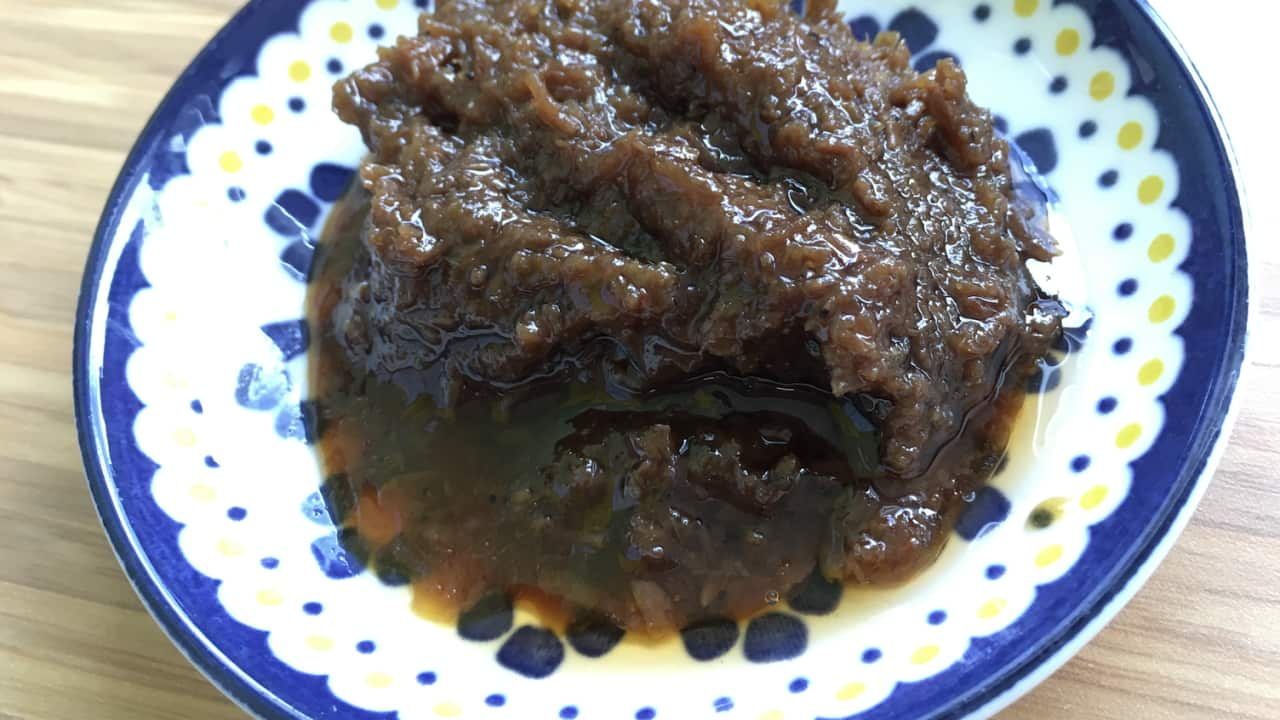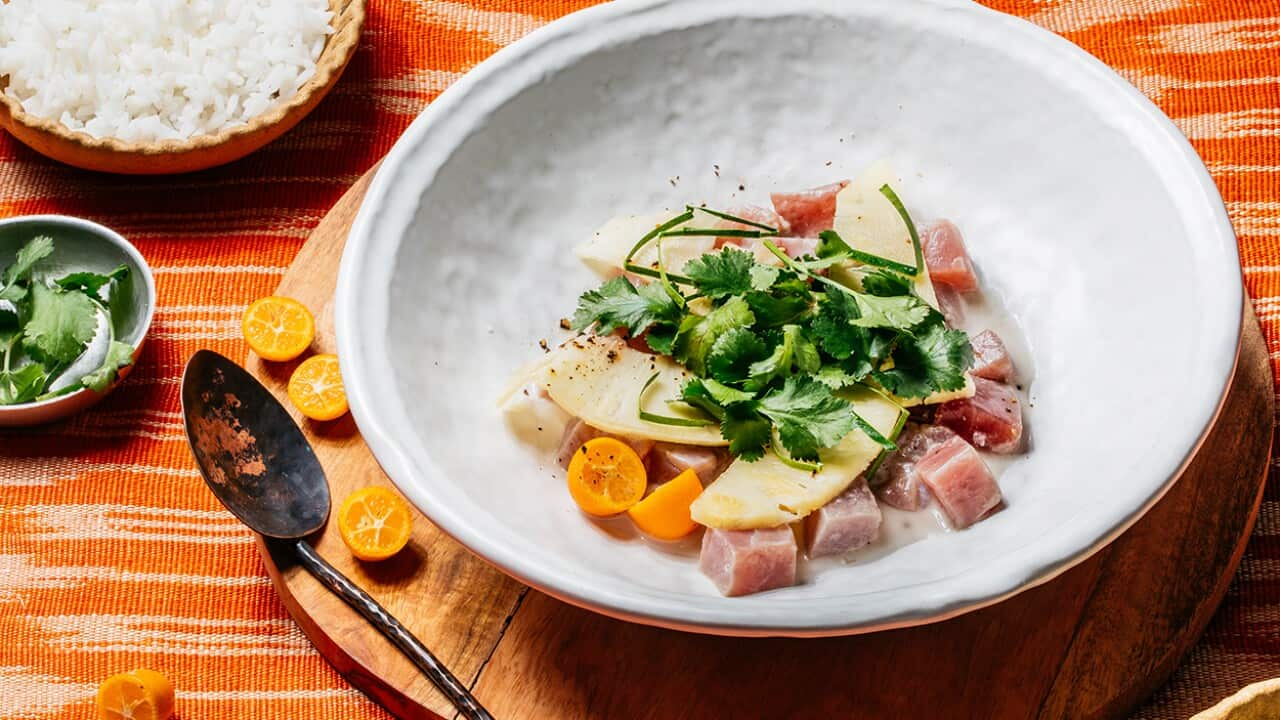--- Join Yasmin Newman as she explores a range of Filipino dishes and flavours in streaming now at ---
Lining pantries and window sills in Filipino homes are the vibrant sweet, sour, salty, funky and bitter ingredients of our tropical backyard. In Filipino cuisine, these flavours come together with abandon, tempting the palate with their unique combinations.
The good news is many of these ingredients are already Australian kitchen staples. Other ingredients are available at Filipino food stores, or, in the case of fresh kalamansi (a native citrus also spelt calamansi), in the backyard of a Filipino friend.

Oven-roasted Cebu lechon (roast pork belly roll) from Taste of the Philippines. Source: Kitti Gould
All the sour
Sour flavours are at the heart of Filipino cuisine. The acidity lifts flavours, balances sweetness and saltiness, and cuts through rich foods. We savour the natural sourness of fruits like guava, tamarind, green mango and kalamansi to the fermented sourness of suka (native vinegar).
Lining pantries and window sills in Filipino homes are the vibrant sweet, sour, salty, funky and bitter ingredients of our tropical backyard.
There are four main types of native Filipino vinegar: sugar cane (sukang maasim), coconut water (sukang niyog), coconut palm (sukang tuba) and nipa palm (sukang paombong). Suka is used to marinate, pickle, cure and braise some of our most-loved dishes. It's also used as a dipping sauce (sawsawan). Spiced regional vinegars, such as pinakurat and sinamak, are popular too. I love the wild and complex flavours of unfiltered native vinegar, but commercial varieties also work well.
Native to the Philippines, kalamansi is the country's pride and joy. A small, green, round-shaped fruit, it has a unique flavour, blending notes of lemon, lime and mandarin. It's mostly squeezed over food at the last minute for a tart hit, but it's used in everything from savoury dishes to sweet drinks.

Is this Filipino staple likely to be the new yuzu? ( Source: The Entree.Pinays
Season with more than salt
With more than 7,000 islands surrounded by ocean, another bedrock of Filipino food is salty, marine flavours including fish sauce (patis), which is commonly used as a seasoning.
Toyo, or soy sauce, arrived in the Philippines with Chinese merchants, adding flavour and colour to a range of dishes. It comes in grades, from light to dark, but light soy sauce is the most common type used in Filipino food. Toyomansi – soy sauce and kalamansi – or soy sauce and vinegar (suka at toyo) are favourite dipping sauces.
Bagoong refers to a broad category of pungent liquid sauces and viscous pastes made from fermented seafood. Bagoong alamang, or shrimp paste, is the most common and used as an ingredient or a condiment. Fresh shrimp paste is widely available at markets in the Philippines. In Australia, it can be bought bottled fresh or sautéed.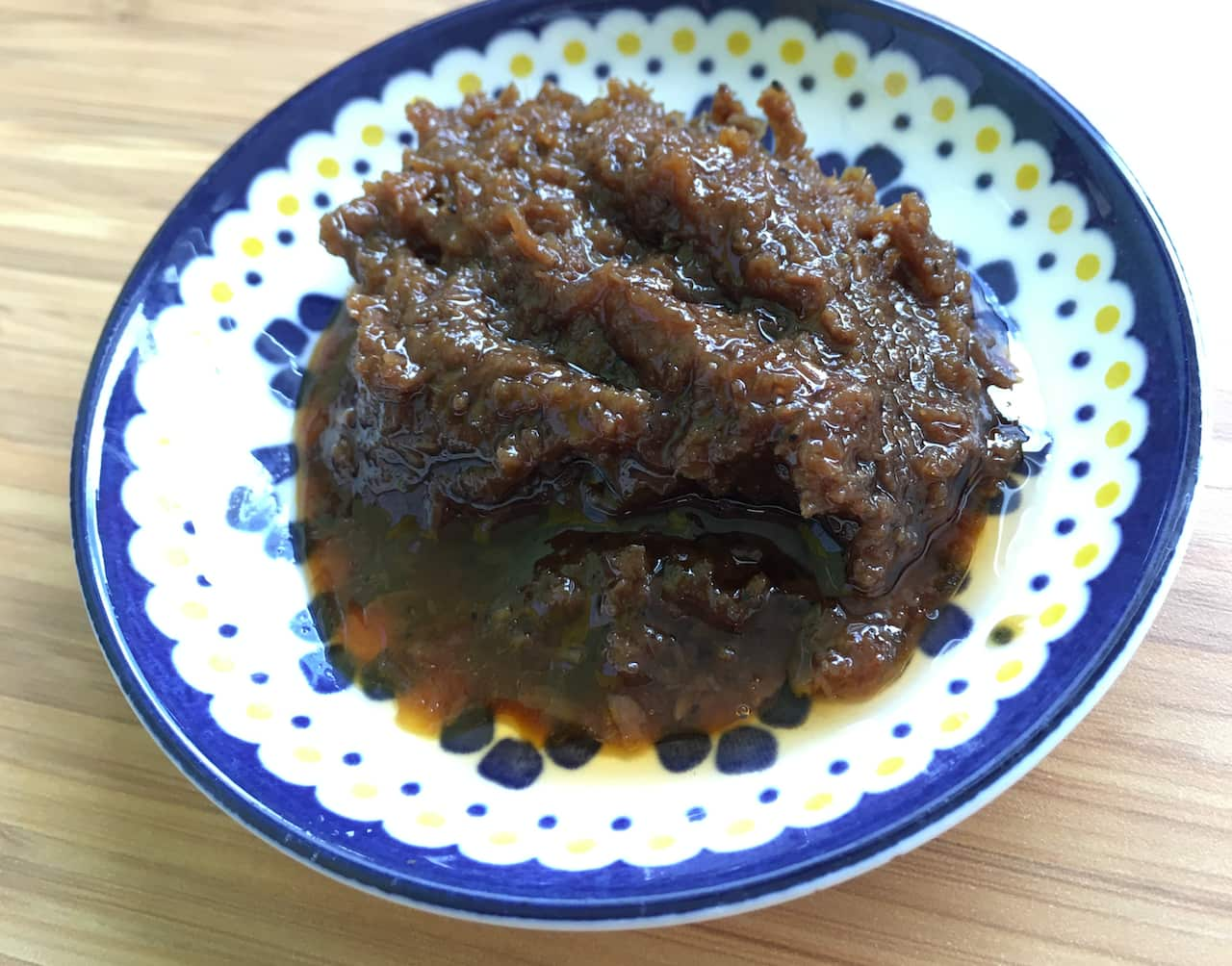

Bagoong adds flavour and depth to dishes. Source: Maida Pineda
Aromats galore
Guisado is considered the holy trinity of aromats, much like Spanish sofrito. Starring garlic, onion and tomato, it's the foundation of our stir-fries and braises and can make any simple vegetable or leftover taste good.
Garlic is used without restraint in Filipino cuisine. It is found in almost every dish in some shape or form: chopped with vinegar for a punchy dipping sauce, fried crisp as a garnish or sautéed in guisado. Garlic is typically the first ingredient that goes into a pan after oil; Filipinos favour the intense flavour that this gives.
Native Filipino tomatoes are slightly sour with a mottled green and red skin. They are used to make a rich sauce for countless dishes, from menudo to kinamatisang manok. In some regions, it is also used as a subtle souring agent for sinigang (sour soup).
RICH IN TOMATO
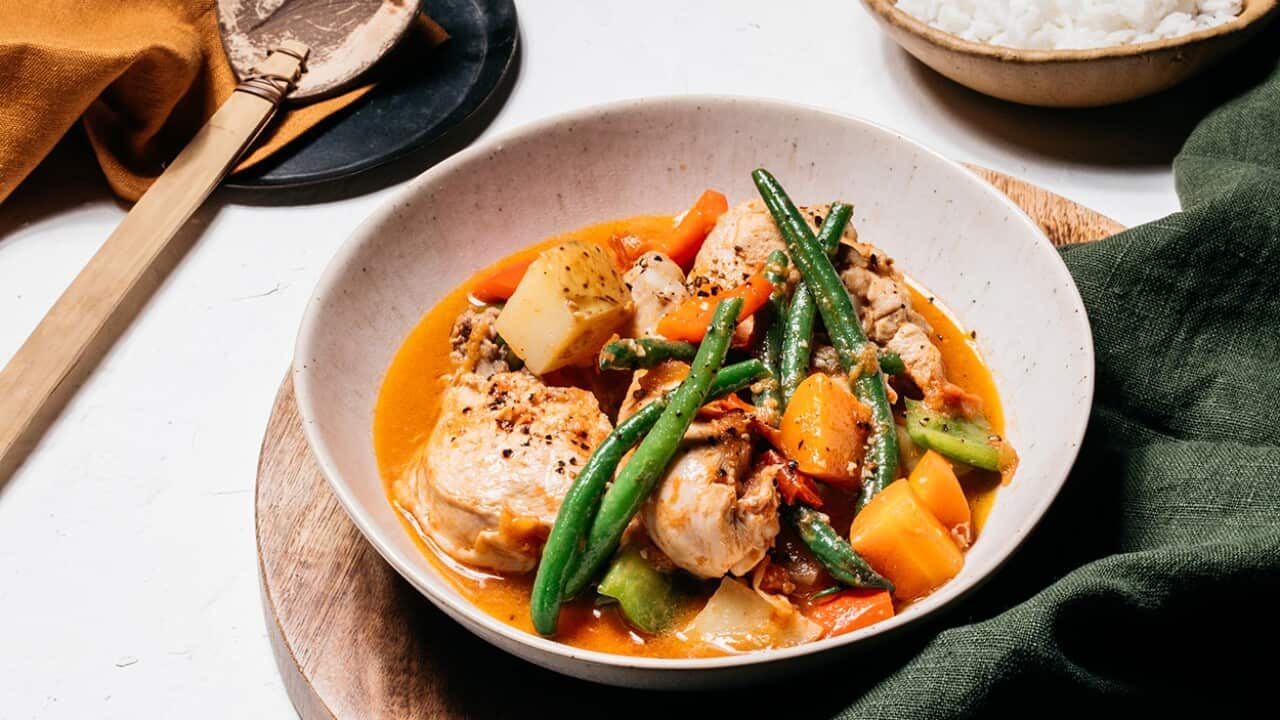
Filipino chicken and tomato stew (Kinamatisang manok)
Chillies are widely used in Filipino cooking, but conservatively compared to other Asian cuisines and more so in certain regions and regional dishes, like Bicol express. The two main varieties are the hot short red siling labuyo and milder long green siling mahaba. Chilli leaves (dahon ng sili) add a peppery taste to a number of soups.
A CLASSIC
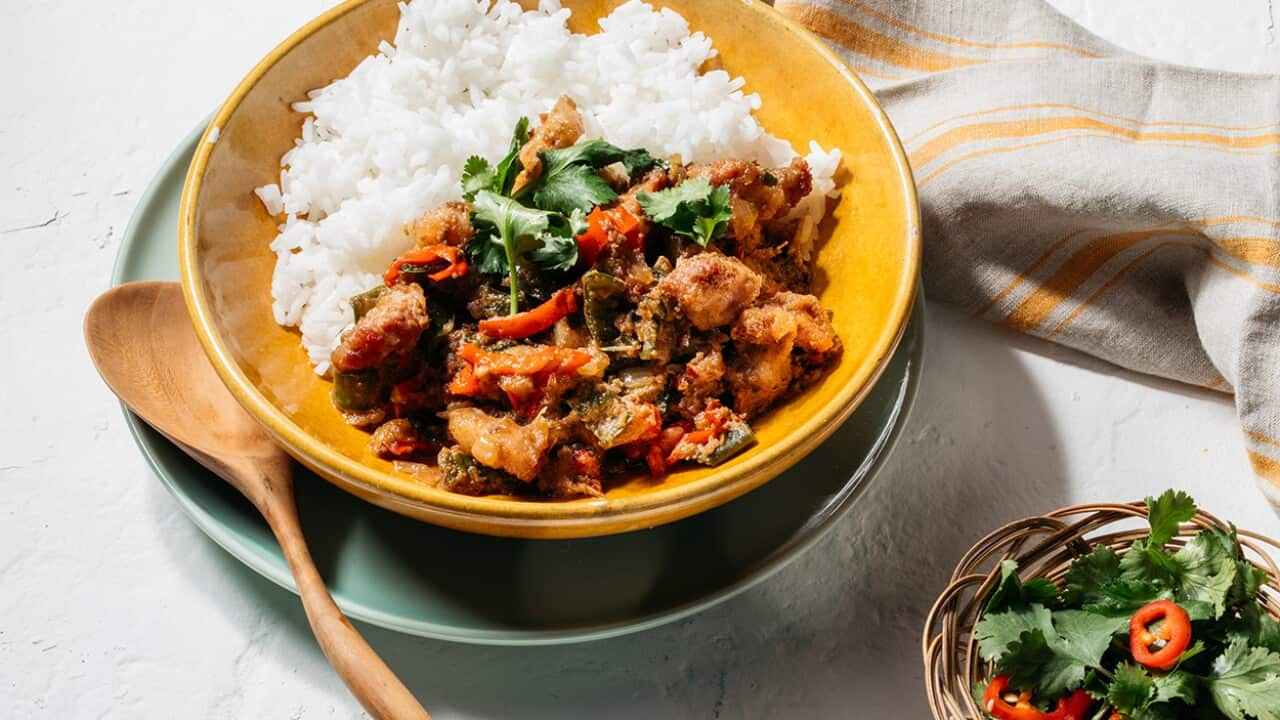
Smoked Bicol express
Atsuete, or annatto seeds, are the small, hard dark red seeds from the achiote tree. Native to South America, they were brought to the Philippines via the . They are prized, mainly as a colourant. When crushed to a powder, soaked in water or vinegar, or steeped gently in oil, they release an intense red pigment, which gives a number of Filipino dishes their trademark look. It also adds a delicate slightly sweet and peppery flavour.
Other common but less widely used aromats include ginger, turmeric, lemongrass and bay leaf.

Filipino chicken and tomato stew (aka kinamatisang manok). Source: Kitti Gould
Sun-drenched sweetness
In the heat of the equatorial sun, Filipino fruit serves up a special sweetness (carabao mangoes hold the Guinness World Record for the sweetest type). A vestige of the vast sugar cane plantations established during Spanish colonial rule, Filipino sugar is similarly sun-drenched. Semi-refined like muscovado, it also has a delicious molasses-y finish and is used widely in kakanin (sticky rice cakes).
Catsup is used in much the same way as ketchup or tomato sauce. The difference is that the base is made of bananas instead of tomatoes and has a sweeter, slightly spicy taste. Commercial varieties are artificial, but homemade versions are relatively easy to make and show off its unique flavour.
Watch Episode 1 here:


